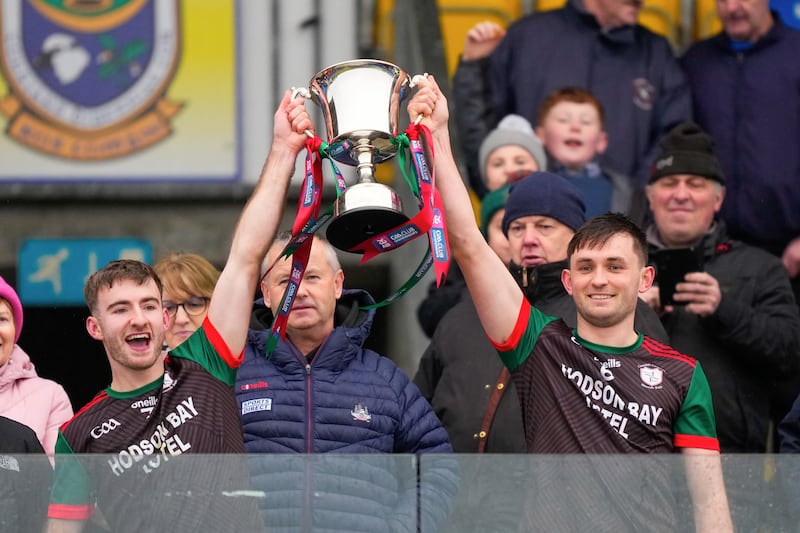In Court 13 at the Central Criminal Court in Dublin for nearly three months, the family of Bobby "Mr Moonlight" Ryan sat with quiet dignity while details of his horrific death and the jealousy of Patrick Quirke seeped out drip by morbid drip.
Quirke's wife Imelda was there too, and sat stoically, often taking notes, as details of her husband's crime and his "seedy" affair with his late brother-in-law's wife Mary Lowry were pored over. Again and again, the court heard Quirke say, in interviews with gardaí and in a letter penned to a Sunday supplement agony aunt, that he loved Lowry; that he wished he could transfer his feelings for her to his wife; that he still loved his wife but wasn't "in love" with her, and that he was devastated when he found out Lowry was seeing another man.
If it hurt, and it must have, Imelda Quirke did not let it show. Every morning she arrived with her husband, before sitting alone in the body of the court, unless she was accompanied by her son as her husband sat in the dock.
When there was a break the couple shared a packed lunch. And when the occasional warm afternoon came, they strolled in the Phoenix Park. In the evening they left together. The only time her husband showed any emotion was when there was mention of the tragic death of their son, Alan, in August, 2012.
To Imelda's right throughout those 13 weeks of evidence were Robert Ryan Jnr and his sister Michelle, the heartbroken children of a loving and charismatic father who disappeared for 22 months only to be found bludgeoned to death and buried in a slurry tank.
Prosecution counsel Michael Bowman called it a concrete sarcophagus - a disused waste-tank that had once been used to collect mud, milk, cow faeces and chemicals washed through an underground pipe from an old dairy farm across the yard.
Robert and Michelle Ryan were visibly shaken by some of the evidence given during an often gruelling trial, particularly the pathology that detailed the multiple blows that had fractured their father’s skull in several places.
On one occasion a photograph of their father's skeleton, freshly taken from the tank and blackened by the filth it had lain in for 22 months, was accidentally displayed on the court monitors. Michelle and her mother, Mary Ryan, Bobby's former wife, left sobbing.
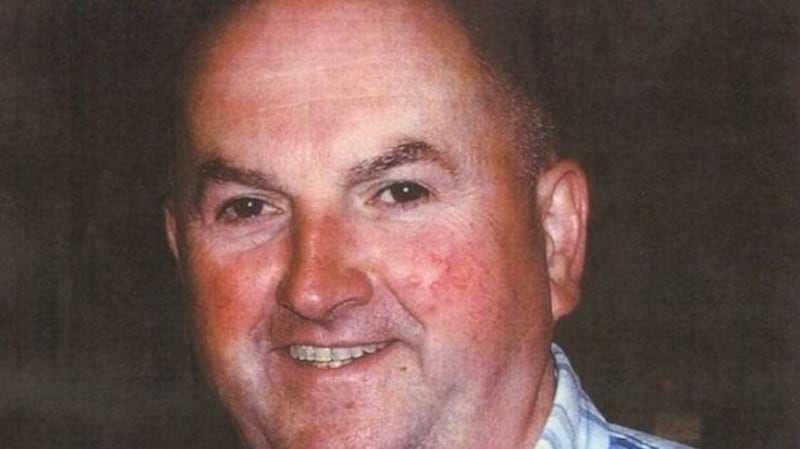
Robert Jnr remained but the colour left his face as the horror of what happened to his father and the callousness of his killer were revealed in sickening detail. It was an emotional moment in a trial that veered from high emotion to painstaking examination of evidence and legal arguments on fine points of law.
Evidence issues
Much of the 15-week trial took place in the absence of the jury as lawyers argued over admissibility of evidence and even whether the jury should be discharged, or directed to find Quirke not guilty without beginning their deliberations.
Twice the defence asked for the jury to be discharged amid concerns about the late disclosure of evidence and complaints about the Garda investigation. Fingerprint evidence had been ignored, the defence said, and photographs lost.
Prosecution witnesses had failed to disclose everything they knew, or everything they would later rely on in court, it was claimed. Witnesses changed their evidence when they got in the stand, they said, undermining the defence cross-examination.
But Ms Justice Eileen Creedon refused to discharge. When the prosecution case closed, following a three-month trial, the defence asked her to take the fate of their client out of the jurors' hands and direct them to acquit.
The only evidence against Quirke, they said, was speculative, and at its height it would arouse suspicion but fell well short of proof beyond reasonable doubt. A conviction on such evidence, they said, would be unsafe. Again, Ms Justice Creedon disagreed and left Quirke’s fate to the six men and six women of the jury.
Barristers Bernard Condon and Lorcan Staines, for the defence, frequently rose to ask the jury to leave whereupon they would make various applications or complaints to the judge.
When Condon rose on Wednesday, March 6th, following weeks of seemingly interminable legal argument, there was a gasp and even a “f**k sake” muttered from the back of the court. Even jury members could be seen rolling their eyes.
The arguments sometimes became heated. On a number of occasions, Ms Justice Creedon warned counsel not to be "rude" to one another. When the prosecution junior counsel David Humphries asked one witness if he was "sure" when he said that Patrick Quirke was at the milking parlour in Breanshamore at 8.15am on the morning that Bobby Ryan disappeared, Bernard Condon asked the jury to leave before branding the question a "disgrace".
Condon accused Humphries of impeaching his own witness and said the question suggested to the jury that there was something questionable about the witness’s evidence. Condon said the only reason he did not ask for the jury to be discharged was because his client wanted the trial to continue.
He accused Humphries of setting the witness up and said the prosecution should not have led evidence if they did not believe his answers were credible. Denying that he had impeached the witness, Humphries pointed out that the witness had said in his Garda statement that he was not sure about the details.
Meanwhile, Staines, for the defence, suggested that the Director of Public Prosecutions was trying to hide evidence by refusing to call Acting State Pathologist Dr Michael Curtis. The defence wanted Dr Curtis to give evidence that Bobby Ryan's injuries could have been caused by a vehicle but the prosecution had their own pathologist, Prof Jack Crane, who said the injuries were most likely from a blunt object. The prosecution refused to call Curtis, leaving the defence to call him themselves. The prosecution was therefore able to cross-examine the pathologist, something they could not have done with one of their own witnesses.
Prosecuting counsel Michael Bowman used the opportunity to some effect, using evidence Curtis gave to suggest to the jury that Bobby Ryan’s killer could have lured him to an area that would be easy to clean, like the nearby milking shed where there is a hose and drain.
This helped the prosecution to overcome the obvious shortfall in its case that nobody had noticed an area of blood staining anywhere around Fawnagowan despite extensive searches by gardaí. If Bobby Ryan was beaten to death with a blunt object within 60 metres of Mary Lowry’s home, where were the blood stains? Juries are not allowed to speculate but at least this was a possible explanation of something that required explaining.
Quirke (50) of Breanshamore, Co Tipperary had pleaded not guilty to the murder of Bobby Ryan whose body was found in an underground run-off tank on the farm owned by Mary Lowry and leased by the accused at Fawnagown, Tipperary 22 months later in April 2013.
Testy exchanges
There were many testy exchanges between counsel in what was a particularly niggly trial. The defence repeatedly accused prosecution barristers of asking leading questions and were exasperated by the level of disclosure and fresh statements coming at them throughout the 13 weeks of evidence. These exchanges and fresh disclosures accounted for much of the delay in what was initially expected to be a six- to eight-week trial.
The defence tested to the limit every aspect of the prosecution case and in particular honed in on the idea that Bobby Ryan could have died as a result of a collision with a vehicle rather than a beating with a blunt object.

They questioned numerous witnesses about a Toyota Corolla in a shed that was used by Lowry’s teenage son Tommy as a “field car” and asked gardaí why it was not taken away and properly examined. They asked Lowry’s son Jack, who was 11 when Bobby Ryan went missing, whether he ever drove the field car.
He had to insist more than once that at age 11 he had no idea how to drive, did not know how to start a car, and could not reach the pedals. Mary Lowry and her family often seemed to feature more highly in the trial than Quirke or Bobby Ryan.
The defence focused on the fact that her house was not properly searched when Ryan went missing in 2011. They asked her son Jack if his uncle Eddie had called around on June 2nd, the night before Bobby Ryan went missing.
“I was 11, I don’t remember,” he told the court. Gardaí did search Lowry’s house in 2013 following the discovery of Bobby Ryan body and much was made of the fact gardaí discovered what they thought were blood stains in Lowry’s bedroom and living room.
David Humphries tried to ask one Garda witness if he knew what the final outcome of scientific tests on those supposed blood stains was when Staines interrupted, saying the witness should not be allowed to give evidence beyond their area of qualification.
The court adjourned for the day and press headlines screamed that blood was found in Mary Lowry’s home. The following day scientists revealed that those stains were false positives. They were not blood at all.
Dr Martina McBride said one sample on a light fitting and ceiling that gave a “presumptive positive” result for blood was probably fly faeces which can be mistaken for blood by equipment routinely used by gardaí.
The defence tried to prevent much of the prosecution case going before the jury and were successful in excluding evidence that someone had used Quirke’s computer to search for infamous Irish murderers Brian Kearney and Joe O’Reilly.
Ms Justice Creedon said the searches were relevant but she was concerned that those murders were “notorious” and therefore the fact of the search would be prejudicial to Quirke but not sufficiently probative to justify their inclusion.
She also ruled out recordings found on a hard-drive in Quirke’s home which contained audio of an intimate sexual nature between Quirke and Lowry. She said the fact he had such recordings suggested a “strange sexual proclivity” on his part and therefore was again potentially more prejudicial than probative.
The fact of the affair, she said, was already established. The jury did hear that the hard-drive contained a recording of Mary Lowry in conversation with her boyfriend Flor Cantillon, whom she met in 2012 after Bobby Ryan's disappearance.
How Quirke made that recording is not known but it suggests his obsession with Lowry continued long after she decided she wanted nothing to do with him.
Quirke-Lowry relationship
Patrick Quirke relied on Mary Lowry emotionally and financially. Her husband Martin, best man at Quirke’s wedding and brother of Quirke’s wife Imelda, died in September 2007. Almost immediately Quirke started farming what was now Mary Lowry’s land at Fawnagowan.
He helped Mary Lowry with her finances and they started sleeping together in early 2008. Lowry called this a “seedy” affair, something she was ashamed of. She had not had sex in a long time, she said, and felt that Quirke was overpowering and intimidating.
She said she had not chosen to have an affair, but was “led” into it when she was vulnerable following her husband’s death. Quirke’s and Lowry’s finances became intertwined as he used €80,000 of her money to invest in contracts for difference (CfD), a way of betting on share-price movements.
He suggested to her that she leave €100,000 to him in her will so that he could take care of her children if anything happened to her. He took up a seven-year lease on her farm where he kept dry stock, his dairy herd remaining at his home farm at Breanshamore.
He borrowed €20,000 from her when his creditors started demanding repayments on loans. When he lost cattle to bovine venereal diarrhoea he said it came from her late husband’s herd and she should compensate him.
He later claimed that she offered to let him keep the €20,000 as compensation, something she denied. They had other joint investments in stocks and shares. Later, it emerged that his lease on the 50 acres at Fawnagowan cost him just €1,600 annually when EU single farm payments were taken into account.
Quirke would repeat over and over that he loved Mary and that he called to her home almost every day for about three years. But then, in August 2010, she met Bobby Ryan. Ryan was, she said, a “breath of fresh air” and with him she no longer had to lie and hide.
Her three boys loved him and he loved them. He was fun, funny and full of life. They shared a passion for music and dance. When Quirke found out in late 2010, he was furious. He told gardaí that he became suspicious, checked her phone and discovered text exchanges with Ryan.
He took her phone and used it to text and telephone Ryan in a bid to break up the relationship, telling Bobby Ryan, “I’m the man.” Mary Lowry had to plead to get the phone back and later had to come clean to Bobby Ryan about her relationship with Quirke.
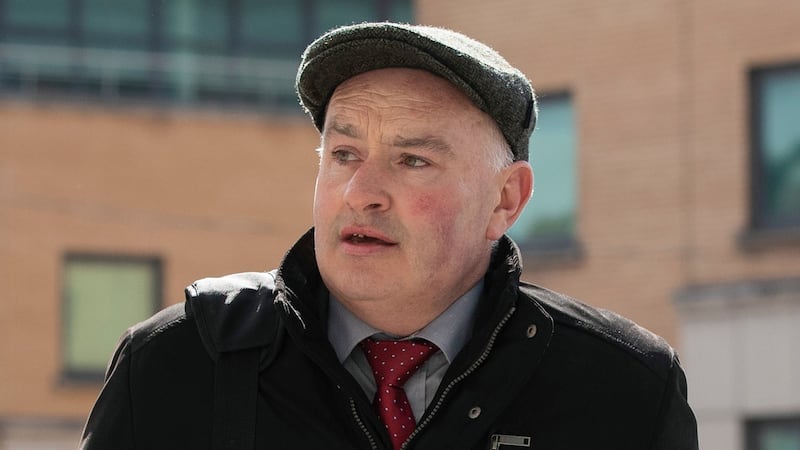
Even after that Lowry did not turn her back on Quirke. She was worried about him, he seemed down and messages he sent her made her think he might be suicidal. Bobby Ryan offered to meet Quirke, to give him some guidance. Bobby Ryan suffered after his own marriage break-up and he thought he could help.
They met in Hayes's Hotel in Thurles, talked for about an hour and shook hands. Quirke would later tell gardaí that he enjoyed this meeting as he felt Ryan knew that he was not some "monster" out to get him. But, in reality, Quirke was unimpressed.
‘A man for the women’
Later, he would tell Lowry that her new boyfriend smelled. He told Lowry’s brother Eddie to talk sense into his sister, that Ryan was the type of person who would be out late, and was “a man for the women”.
The jury did not get to hear that when Quirke and his wife accompanied Bobby Ryan and Mary Quirke to a Brendan Grace concert, Quirke warned Ryan to stay away from Mary Lowry. Later, Ryan would tell his daughter Michelle about this but she could not give it as evidence as it was hearsay.
In February 2011, a desperate Patrick Quirke sent a “Dear Patricia” letter to the Sunday Independent agony aunt complaining that he had ruined his life by starting an affair with a “family friend”. He said he was still in love with this woman but she had started seeing someone else.
He was broken-hearted and angry that things were going so well for her while he was left with nobody to talk to. He wished he could transfer his feelings from Lowry to his wife, but he could not. Mary Lowry saw the letter. Immediately, she knew who had written it. When she confronted Quirke he told her he had nobody else to confide in.
But Quirke was not out of ideas yet. On February 4th, 2011, he carried out his second sabotage attempt on the relationship when he contacted Tusla and claimed Mary Lowry was neglecting her children emotionally and staying out late with her new boyfriend. She had “lost the run of herself,” he said.
This attempt to scuttle the relationship also failed as Tusla found nothing untoward was going on at the Lowry home. His later claims to gardaí that he was not jealous and was happy for Mary Lowry and Bobby Ryan were flatly contradicted by his devious and repeated attempts to break them apart.
By June 2011, Quirke had hatched his final plan to kill Bobby Ryan, though the exact details will never be known. What is known is that Bobby Ryan called to Mary Lowry’s at about 9pm on June 2nd. The following morning they awoke at about 6am and made love before he left at about 6.30am.
Three to 10 minutes later she heard his van cross the cattle grid at the end of her drive, which she would tell gardaí was longer than usual for him to leave. The prosecution argued that it was during this time that Bobby Ryan was lured to his death before Quirke drove away in Bobby Ryan’s van.
‘Hot and sweaty and bothered looking’
At 8.30am, Mary Lowry saw Quirke on the farm and noted he was "hot and sweaty and bothered looking". It was her routine on Fridays to take her children to school and her mother-in-law, Rita Lowry, into town. That meant there was nobody at Fawnagowan for much of that morning, leaving Quirke clear to complete his plan by placing the body in the tank and cleaning the scene of the murder.
As Bowman pointed out, only someone with knowledge of the Lowry family’s habits would have known that a Friday morning was the perfect time to murder Bobby Ryan and dispose of his body unseen at Fawnagowan.
The alarm was raised when Ryan failed to show up for work. His daughter Michelle was immediately distraught. She knew her father had been down following the split with her mother and feared the worst. She met Mary Lowry, who was also by now deeply worried.

Michelle Ryan found her father’s car at a car park leading into Kilshane Woods that afternoon, prompting searchers to focus their efforts there. Though they did not know it, his body lay no more than 60 metres from Mary Lowry’s bedroom.
With his work done, Quirke went to a hotel in Portlaoise later that morning as a treat for his wife’s birthday. But he had already made mistakes. Breda O’Dwyer, an artificial inseminator, noted that for the first time in 15 years of visiting Quirke’s farm he was still in his milking parlour at Breanshamore when she arrived at 9.30am. Clearly something had put out his schedule.
The searches went on for Bobby Ryan, his distraught family left with no idea what had happened to him. Life went on for Quirke. He tried to get back with Mary Lowry and convinced her to spend a night with him at Fitzpatrick's Hotel in Killiney, south Dublin, in January 2012.
She told the trial she did not want to be there, got drunk, and left early the following morning. "We didn't rekindle our affair," she insisted. There was also a suggestion that she spent a night with Quirke at the plush Cliff House Hotel in Ardmore, Co Waterford, in September 2011, three months after Bobby Ryan went missing.
But Mary Lowry strongly denied staying in the Cliff House despite a payment for more than €400 from her bank account to the hotel. In March 2012, over the St Patrick’s Day weekend, Mary Lowry met Flor Cantillon and they started dating.
Infatuation continued
Again, Quirke was pushed aside but his infatuation with Lowry continued. He would tell gardaí that he wished Mary Lowry well but he somehow managed to record a conversation between her and Cantillon as they joked and laughed while reading from a letter to a Sunday supplement agony aunt.
The recording was on a hard-drive in Quirke’s house but no explanation was given as to how it got there and Quirke was never asked about it in interviews. Gardaí only discovered the Cantillon recording some weeks before the trial began.
By now the relationship between Lowry and Quirke had soured. He began badgering her for money, insisting she should compensate him for the infection to his cattle. In August 2012, tragedy was visited on the Quirke family when Quirke’s son Alan died in a farming accident. Two weeks after the funeral, Quirke confronted Mary Lowry and accused her of not supporting him, complaining: “After all I’ve done for you.”
When he bumped into her brother Eddie at Fawnagowan he told him Mary Lowry was a “right bitch” and warned that he would personally remove her from the church if she turned up to Alan’s month’s-mind Mass.
He may have been angry but he was still interested in Lowry. In December 2012, Quirke was caught on CCTV snooping around her home. She had set up CCTV after her house alarm repeatedly went off and now here was Quirke on camera, peering in her windows, taking underwear from her line, checking her post box, and using a key to open her front door.
Gardaí arrived, reacting to the alarm, but Quirke disappeared only to re-emerge once they had gone. Mary Lowry already believed Quirke had stolen her passport from her house, preventing her from taking a planned family holiday.
For her, this was the end. Considering the Quirke family was still grieving, she did not want to be too harsh and asked a solicitor to invite Quirke to terminate his lease at Fawnagowan, for both their sakes. After initially demanding compensation, Quirke agreed to just leave. He was to be out by early July.
Discovery of body
The clock was ticking. Quirke could not leave the body where it was because, as prosecution counsel Michael Bowman pointed out, the next person to farm that land might want to reopen the dairy and would almost certainly open that tank to find out if it could still be used or repaired.
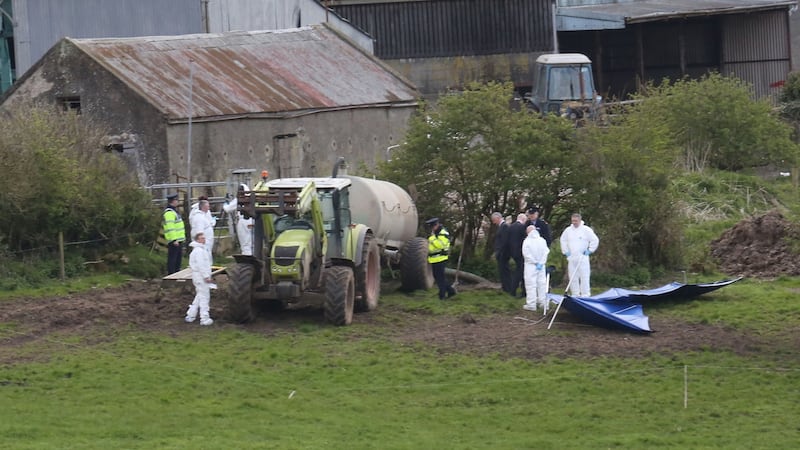
On April 29th, 2013, Mary Lowry had a final run-in with Quirke. She bumped into him and called him “some c**t” and berated him for taking her “knickers” from her line. Quirke was now feeling vindictive.
The following day he staged the discovery of the body, telling gardaí he needed water to agitate slurry in one of the sheds. He thought the old run-off tank from the dairy would contain water because a leak from the mains some weeks earlier had run into it.
The tank measures 3.6 metres by 1.8 metres and is 1.6metres deep. It could be accessed by removing two slabs of concrete that covered about one-quarter of the entire tank. The rest of it was covered by poured concrete which was not designed to be removed. Each movable slab weighs well over 20 stone (130kg).

Quirke said he had not opened that tank since 2008. On April 30th, 2013, he used a shovel to prise open one of the slabs just far enough so he could push through a pipe from his suction tanker. He said he watched as the water level went down and then noticed something peculiar in the tank. He used his hands, he said, to push aside the second slab and saw what he now knew to be human remains.
There were a couple of problems with that story. Engineer Michael Reilly found the tank was porous and incapable of holding water. That April was a dry month so there was no way the tank contained more than a few inches of sludgy water. Also, when Quirke prised the first slab open his view into the tank would have been severely limited. When gardaí reconstructed what Quirke would have seen they determined it was impossible to see anything in the tank.
The jury did not hear about this reconstruction because the defence objected on the grounds that gardaí had not consulted an engineer, took no measurements, and did not take into account lighting conditions, the time of day, or the time of year. Ms Justice Creedon described the reconstruction as “frail”.
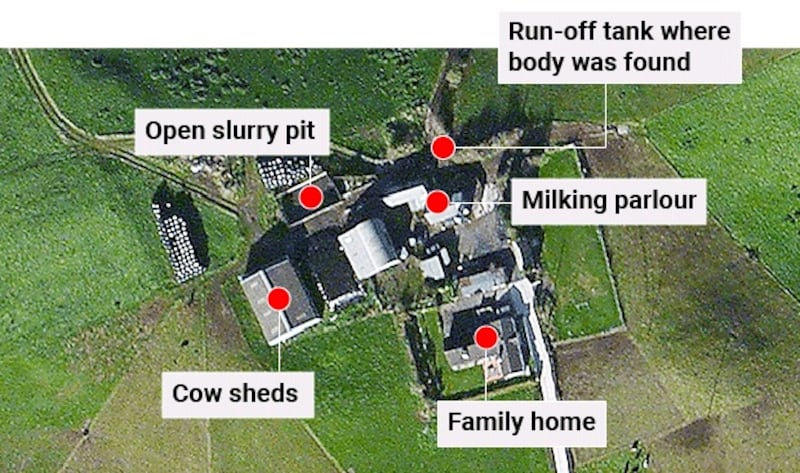
Gardaí were immediately suspicious of Quirke. They had, by now, gathered much evidence about the volatile relationship between Quirke and Lowry. But Quirke was prepared for their questions and tried to point suspicion at Mary Lowry.
Jealousy
He denied having any role in Ryan’s body ending up in the tank and questioned why Mary Lowry was unclear about whether it took 10 minutes or two minutes for Bobby Ryan’s van to leave her driveway the morning he disappeared.
He asked gardaí how she found his van so quickly later that day and wondered why she searched for the van on a route she had no reason to think he would have taken. He also wondered how she saw the van from the road.
“I found it strange,” he said. Later, he described it as “intriguing”. She had a “couldn’t-care-less attitude about it,” he said. He further tried to point suspicion at Lowry by saying she knew about the existence of the tank. His jealousy had turned to spite but again Quirke had made errors.
Some weeks before the "discovery" of Bobby Ryan's body, Quirke had secretly opened the tank to check on the remains. In doing so, he inadvertently allowed flies into the tank. They laid eggs and entomologist Dr John Manlove would later identify larvae on the body that showed there had been a single fly infestation at least 11 days and probably some weeks before April 30th.
Quirke had also been busy preparing for his Garda interviews. When his house was searched on May 17th, almost three weeks after the discovery, they found traces of notes on an A4 page which were uncannily similar to what he said in interview with gardaí about Mary Lowry and Bobby Ryan’s disappearance. It begged the question, had he made those notes before the “discovery” on April 30th and, if so, why would he be preparing for Garda interviews unless he knew he was going to discover Bobby Ryan’s body?
During the search of Quirke’s home in May 2013 gardaí also seized computers and hard-drives. Supt Patrick O’Callaghan, the senior investigating officer, had predicted they would find searches related to human decomposition.
He was right. On the same day that Quirke was caught on CCTV snooping around Mary Lowry’s yard he searched for “human body decomposition timeline” and looked at various articles relating to how the body decomposes after death.
In the months prior to that he had carried out similar searches and also looked at an article about DNA evidence and its limitations.
When gardaí asked him about those searches he told them his son had recently died in December 2013. But gardaí established that he had looked up decomposition prior to his son’s sudden death. Quirke’s web of lies was breaking apart.
Quirke is a meticulous murderer. He planned everything and managed to hide the fact of the murder for 22 months, leaving gardaí to believe that they were dealing with a suicide. But he was undone by his own meticulousness - his internet research on DNA and decomposition, his need to check on the body weeks before revealing it to the world, his ham-fisted attempts to point suspicion at Mary Lowry.
As he begins his life sentence he can reflect on all the things he might have done differently.











